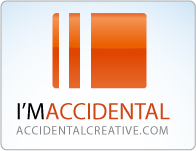I have added a few new items to the right column.
Check out: The Obsessives, from Print Magazine
Kate Bingaman is a site I came across last December ’06, it shows what a little obsessive behavior can get you in the form of publicity.
I also added sections on Paper Artists, Web Design, Design Societies, Portfolios, Interviewing, Places to sell your art, Exhibitions [online and in real-time], Workplace Tips, Layout Inspirational sites, Reference Sites and I’ve added to some of the other sections as well. Keep scrolling over this area for new additions, as when I can, I will add new things in.
Designing:
During our next class, you can ALWAYS add to, change, rearrange, re-design the work you have begun. So, come with new ideas and be ready to add your inspirations!
Logo and Packaging Design Tips to Remember:
not in any particular order
A logo’s meaning should be immediately evident. You won’t be around to interpret it for each new viewer. [Do recall, our salsa client WANTS something off-beat and provocative. They want their salsa to stand out from the others on the shelves].
Designing a logo takes time. The firs, fifteenth or even fiftieth design you dream up may not be appropriate. Keep designing! And, keep track of your designs!!
After you have brainstormed a lot of possible solutions, set them aside and revisit them in a few days to objectively pick out the best designs. Writers do the same thing with drafts.
Be certain that any logo you create can be drastically reduced of enlarged in size and still be readable and printable.
Logos can be trademarked.
When an organization grows, sometimes its logo must be updated or replaced in order to reflect the group’s new status.
If both art and type are used in a logo, group them in to a single EPS file for ease of use.
A successful logo should work in color or in black and white, in large and in small applications.
Keep your logo simple enough that it can be used for other applications-signage, T-shirts, publications, and so on.
A logo communicates an organization’s identity in an instant, visual way.
Outdated logos make an organization look out of date.
Imagine your designs in its final use, not just how it appears on screen or on printouts.
If market research or focus groups are not in your budget, check out what the market leaders are doing. Don’t slavishly copy their approach; instead, take cues from what makes their designs successful.
Take field trips to the store in order to judge how your packaging would compare to designs already on the shelves.
If you are creating packaging for a related series of products, keep brand identity in mind. Each of the designs should relate to each other.
These tips have been consolidated from an article by
Dynamic Graphics Vol 2 #6 Nov/Dec 1997
Subscribe to:
Post Comments (Atom)


No comments:
Post a Comment